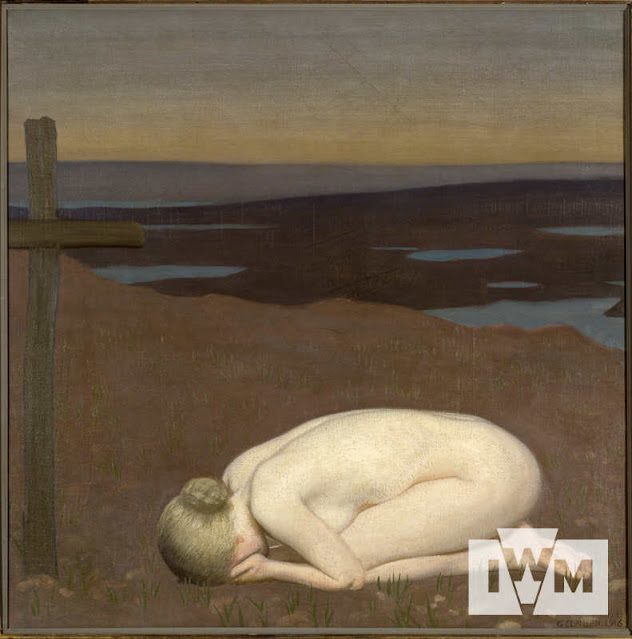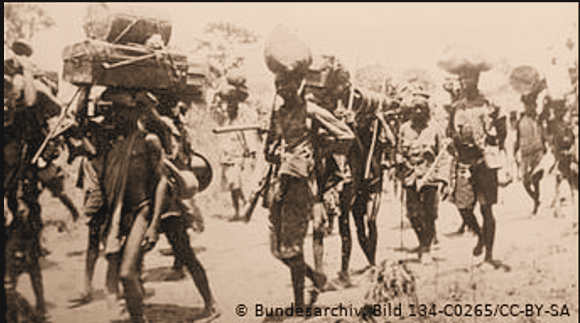 |
| Frank Luke Statue, Phoenix AZ |
Frank Luke, Jr. was born and raised in Arizona Territory. On 23 January 1918, he got his wings and a commission as a second lieutenant at Rockwell Field in San Diego. After a leave, he was off to catch his ship in New York and find his war in Europe. His squadron continued flights over the coming days, finally engaging in their first combat action in two weeks on 14 August. On 29 August, the Eagle Squadron got orders to move to a new aerodrome at Rembercourt near the Marne River. From the small grass field hidden by a ring of trees and artificial camouflage, the 1st Pursuit Group would be launching support for the first American offensive of World War I near the town of St. Mihiel. For air power, it would be a defining moment if Colonel Mitchell could pull it off. For months the colonel had argued for a unified aerial role in the war, and the St. Mihiel offensive would give him that moment. Half a million American soldiers and Marines, supplemented by 110,000 French, were poised to strike at eight German divisions along the line from St. Mihiel. Mitchell commanded more than 500 fighter, observation, and bomber aircraft in support of the offensive.
A key role for the fighters was to deny the German tacticians intelligence information on Allied troop movements. If the enemy did not know the Allied strength, the position of its elements, location of artillery units, and the movement of troops, the offensive might well be a great success and turn the tide of the war once and for all. Such information could only be denied if the fighter pilots could keep the German observation balloons out of the sky. Perhaps no other type of aircraft was as important to either side during World War I than the large observation balloons...called "Drachen" by the Germans and "Sausages" by the Americans. From a well-placed balloon near the front lines, an observer could watch enemy troop movements and direct deadly and devastating artillery fire with pinpoint accuracy. To the infantryman struggling to survive the horrors of war near the front lines, the appearance of an enemy balloon rising on the horizon was perhaps the most dreaded of all sights.
Because of their great value to warfare, both sides took extreme efforts to protect their balloons, which were costly, scarce, and ultimately vital to success on the ground. One might think that the large orbs would be an easy target, stationary and far too big to miss. In fact, the most difficult victory for any flier on the Western Front was a balloon kill. First and foremost, one could not bag a balloon without flying beyond friendly lines. Because they were stationary and tethered to the ground, they were hoisted only in an area controlled by their own forces. To protect the valuable balloons, anti-aircraft guns were concentrated around them on the ground, to fill the skies with deadly explosions (called "Archie" by the Americans). This heavy concentration of fire built a protective wall around the gas-filled balloons that quickly destroyed any would-be attacker in the sky. Finally, if any pilot was flew into the deadly curtain of anti-aircraft fire in his quest to destroy one of the prized balloons, there was usually a flight of fighter planes lurking above to sweep in and quickly destroy him.
 |
Frank Luke with Victory Aircraft |
Every eye along the front turned eastward, where three German Drachen hung boldly in the fading twilight, then back at the legendary lone SPAD as it began to gain altitude and enter enemy territory. Minutes later a cheer went up all along the American lines as the explosion of the first German sausage lit the heavens. Though the first kill had looked surprisingly easy, it had not been. Perhaps as many as ten Fokker D.VIIs had seen Luke cross the lines and dove in to intercept him. It was a five minute aerial dogfight—one lone American in a French-made SPAD against ten German Fokkers in the flickering flames of a burning Drachen. The Fokkers broke off as they watched the doomed Spad fall, turning in search of additional prey. With the enemy fading in the distance, Luke leveled off just 50 yards above the ground. Amazingly, he and his airplane had recovered from their lethal dive.
Luke banked carefully on one wing, canvas now shredded, and pointed the nose of his SPAD at the second balloon over Briere Farm. Archie continued to break all around and the skies were full of flaming onions and flashing, ground-fired machine-gun tracers. Eyes intent on the second Drachen, he ignored all else to hold down the triggers of both his Vickers 11mm and stitch the balloon's side with hot incendiaries. The Drachen erupted around him, hot gasses searing his face and momentarily allowing him to forget the pain in his shoulder. Luke was hit, and hit bad.
Again he banked, turning toward Milly where the third Drachen was being hurriedly hauled towards earth by its frantic ground crew. Heedless of his pain or the now sputtering sounds of his airplane engine, he ran the gauntlet of continuous enemy fire. Holding down the triggers of his own guns, he swooped low on the third balloon as its crew tried in vain to bring it safely back to its nest. Again gasses exploded and the night sky lit up with the tell-tale signature of the American Ace of Aces...three balloons in less than 15 minutes.
 |
| Replica of Luke's SPAD XIII at the Phoenix Airport |
Luke was flying dangerously low after diving to nail the third balloon before it could be hauled into its nest. The lack of altitude hid him from the enemy airplanes. Streaking towards home, he was bleeding, and his plane was badly damaged. Frank Luke was in deep trouble, but he was still breathing, his SPAD was still flying, and he still had bullets in his machine guns. Buzzing low over the village of Marvaux, he saw a troop of German soldiers along the city's main street and opened up as he passed over them. He saw half-a-dozen enemy soldiers fall. His last act of defiance in the face of death sapped his SPAD of any remaining ability to continue. In the distance he saw a line of trees and a small field large enough to put his crippled airplane on the ground. Fighting the stick, he leveled off as he fell, and rolled to a landing across the muddy pasture. Behind him he heard the shouts of the German patrol he had just fired on in Marvaux. Cradling his badly wounded shoulder, he forced himself out of the cockpit and ran for the tree line, working his way to a nearby creek.
Suddenly the enemy was upon him, surrounding him from a distance and calling for his surrender. Frank Luke drew his service pistol and gave them his answer. As quickly as Lieutenant Luke's pistol spoke in reply to the surrender demands, the enemy patrol riddled his body. Triumphantly, the Germans carried the shattered body of the American Ace of Aces back to Marvaux, stripping it of everything but the cheap wristwatch Luke wore on his left arm. There they dumped the body in the bed of an open manure wagon, refusing to let the townspeople even cover it. When at last the Germans had exacted their revenge, they dumped the body in an unmarked hole.
 |
| Frank Luke, MoH |
Over the weeks that followed, stories circulated that the man who was perhaps the greatest flier of World War I was hiding out with the French pilots among whom he had so often before found some semblance of friendship and respect. In just four days, Lieutenant Frank Luke had destroyed 11 balloons and three airplanes. On one of his flights, he downed two foes on only a few gallons of gasoline. The Army carried him as "Missing In Action" for three months, and not until six months after his death, when stories circulating around Marvaus prompted recovery and identification of Luke's body (identification was confirmed by his watch), was all hope for Luke's survival put to rest. It was then also, for the first time thanks to the reports of the villagers of Marvaux, that the story of Luke's last valiant battle on the ground became known.
Source: The Arizona Military Museum





































